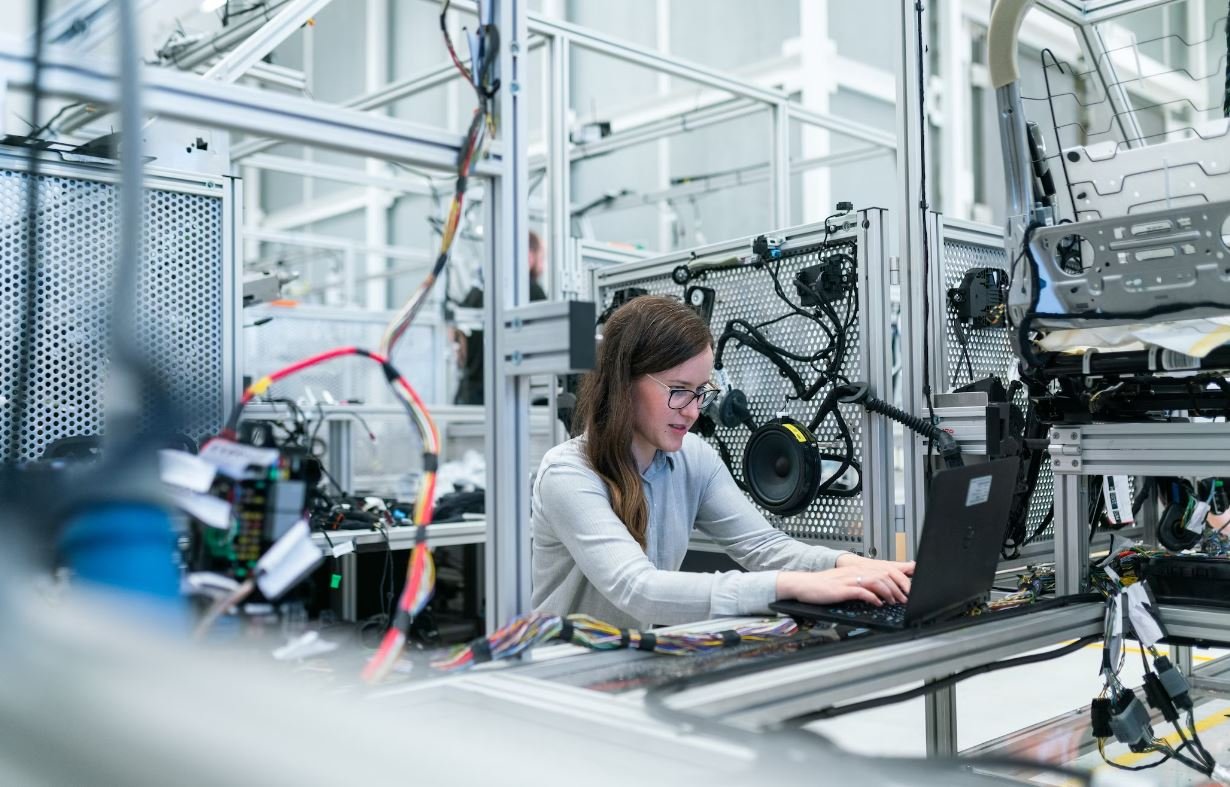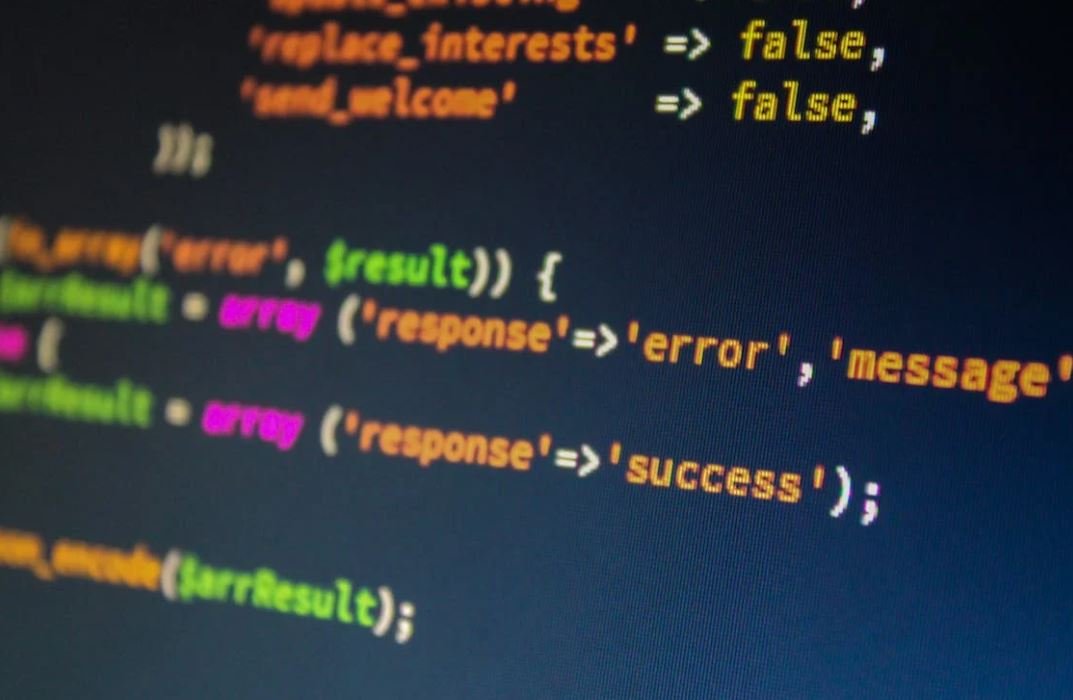Supervised Learning Binary Classification
Supervised learning binary classification is a popular and widely used approach in machine learning. It involves training a model on a labeled dataset to predict or classify new instances into one of two classes. This article provides an overview of the concept, techniques, and applications of supervised learning binary classification.
Key Takeaways
- Supervised learning binary classification is used to predict or classify new instances into one of two classes.
- Common techniques for binary classification include logistic regression, decision trees, and support vector machines.
- Accuracy, precision, recall, and F1 score are commonly used evaluation metrics.
- Supervised learning binary classification has various applications such as spam filtering, sentiment analysis, and medical diagnosis.
Introduction to Binary Classification
Binary classification is a type of supervised learning that involves categorizing instances into one of two classes: positive or negative, yes or no, true or false. The objective is to build a model that can accurately predict the class label of new instances based on their feature values. *Binary classification is widely used in many real-world scenarios where decisions need to be made based on available data.*
Common Techniques for Binary Classification
There are several common techniques used in supervised learning binary classification:
- Logistic Regression: A statistical model that uses a logistic function to model the probability of an instance belonging to a particular class.
- Decision Trees: A flowchart-like structure where each internal node represents a feature, each branch represents a decision rule, and each leaf node represents the class label.
- Support Vector Machines (SVM): A machine learning model that finds a hyperplane in a high-dimensional feature space to separate instances of different classes.
*Logistic regression is a popular and widely used algorithm in binary classification due to its simplicity and interpretability.*
Evaluation Metrics for Binary Classification
Various evaluation metrics can be used to assess the performance of a supervised learning binary classification model:
- Accuracy: The proportion of correctly classified instances among the total number of instances.
- Precision: The proportion of correctly predicted positive instances among the instances predicted as positive.
- Recall: The proportion of correctly predicted positive instances among the actual positive instances.
- F1 Score: A combination of precision and recall, providing a single value that represents the overall performance of a classifier.
*The choice of evaluation metric depends on the specific problem and the trade-offs between different types of classification errors.*
Applications of Binary Classification
Supervised learning binary classification has numerous applications in various fields:
- Spam Filtering: Classifying emails as spam or non-spam to automatically filter unwanted messages.
- Sentiment Analysis: Predicting sentiment (positive, negative, or neutral) from textual data, such as customer reviews and social media posts.
- Medical Diagnosis: Distinguishing between healthy and diseased patients based on medical measurements and data.
*Binary classification techniques can be applied to a wide range of domains where decision-making based on two distinct classes is required.*
Binary Classification Example
| Instance | Feature 1 | Feature 2 | Class |
|---|---|---|---|
| Instance 1 | 0.8 | 0.2 | Positive |
| Instance 2 | 0.4 | 0.6 | Negative |
| Metrics | Value |
|---|---|
| Accuracy | 0.9 |
| Precision | 0.85 |
| Recall | 0.9 |
| F1 Score | 0.87 |
| Algorithm | Accuracy |
|---|---|
| Logistic Regression | 0.85 |
| Decision Trees | 0.82 |
| Support Vector Machines | 0.88 |
As seen from the example above, accuracy represents the proportion of correctly classified instances, while precision and recall provide a measure of the model’s ability to classify instances correctly within each class. The F1 score combines both measures to give an overall performance value. Furthermore, comparing the accuracy of different algorithms gives insights into their relative performance.
Supervised learning binary classification is a powerful and widely used technique in machine learning. With its ability to predict or classify instances into one of two classes, it finds applications across a wide range of domains. By employing various techniques and evaluation metrics, accurate and reliable binary classification models can be built to make informed decisions based on available data.

Common Misconceptions
Misconception 1: Supervised Learning Binary Classification is always accurate
One common misconception about Supervised Learning Binary Classification is that it always provides accurate results. However, this is not the case. Although supervised learning algorithms strive to provide the best possible classification, there are always chances of errors or misclassifications. Various factors such as noisy or incomplete data, biased training sets, or inappropriate model selection can significantly impact the accuracy of the classification results.
- Errors can occur due to noise or incorrect labels in the training data.
- Biased training sets can lead to misclassifications, as the model may not generalize well to unseen examples.
- Choosing an inappropriate model for the classification task can result in inaccurate predictions.
Misconception 2: Supervised Learning Binary Classification is a one-size-fits-all approach
Another misconception is that Supervised Learning Binary Classification is a universal solution for all types of classification problems. While supervised learning is a powerful approach, it does not guarantee optimal results for every problem. Different classification tasks may require different algorithms, feature representations, or preprocessing techniques. What might work well for one problem may not necessarily work for another.
- Some problems may require specialized algorithms like SVMs, while others may benefit from decision trees.
- Feature representation and selection are crucial, and different problems may require different feature engineering approaches.
- Preprocessing techniques, such as handling missing values or scaling features, can vary depending on the data and classification task.
Misconception 3: Supervised Learning Binary Classification is immune to biases and discrimination
It is a misconception to assume that Supervised Learning Binary Classification is inherently immune to biases and discrimination. Machine learning algorithms learn patterns from the training data provided, and if the data contains biases or discrimination, the model will also reflect those biases. This can perpetuate unfair practices and discrimination in the decision-making process.
- Biases and discrimination in the training data can bias the model’s predictions, leading to unfair outcomes.
- Data collection processes may introduce biases, leading to biased training sets.
- The impact of biases can be amplified if the model is deployed and used without careful consideration and evaluation.
Misconception 4: Supervised Learning Binary Classification requires a large amount of labeled data
Some people mistakenly believe that Supervised Learning Binary Classification requires a massive amount of labeled data for training. While having more labeled data can potentially improve the model’s performance, it is not always necessary. The effectiveness of supervised learning algorithms can significantly vary depending on the problem complexity, diversity of the data, and the quality of the labeled samples.
- For simple classification tasks, a smaller labeled dataset may be sufficient.
- Data augmentation techniques can help increase the effective size of the labeled dataset.
- Transfer learning methods can leverage pre-trained models and require less labeled data for fine-tuning.
Misconception 5: Supervised Learning Binary Classification is a fully automated process
Finally, it is a misconception to assume that Supervised Learning Binary Classification is a completely automated process. While machine learning algorithms can perform the bulk of the work, there is still a need for human intervention and expertise in various stages of the process, including data preprocessing, feature engineering, model evaluation, and result interpretation.
- Data preprocessing often requires domain knowledge to handle missing values, outliers, or imbalanced classes.
- Feature engineering involves selecting, transforming, or creating features based on domain knowledge or insights.
- Model evaluation and result interpretation require human judgment to assess the model’s performance and understand its limitations.

Supervised Learning Binary Classification: An Introduction
Supervised learning binary classification is a popular technique in machine learning, where algorithms learn to classify data into two distinct classes. This article explores various aspects of binary classification and presents ten visually engaging tables that illustrate different points and data, allowing readers to better understand the topic.
Table 1: Comparison of Supervised Learning Algorithms
Table 1 highlights a comparison of popular supervised learning algorithms used in binary classification tasks. It showcases their accuracy, training time, and characteristics, providing insights into their strengths and weaknesses.
Table 2: Performance Metrics for Binary Classification
In Table 2, we examine the various performance metrics used to evaluate the success of binary classification models. The table showcases metrics such as accuracy, precision, recall, and F1 score, enabling readers to comprehend the different aspects of model performance.
Table 3: Feature Importance in Binary Classification Models
This table showcases the top features ranked by importance in binary classification models. By understanding feature importance, we can uncover the critical factors that influence the classification process, aiding in better decision-making.
Table 4: Bias and Variance Trade-off
Table 4 delves into the concept of Bias and Variance trade-off in binary classification. It illustrates how different algorithms perform with varying levels of bias and variance, showcasing how finding the right balance is crucial for model accuracy.
Table 5: Confusion Matrix Analysis
In Table 5, we explore the Confusion Matrix, a vital tool in evaluating binary classification performance. It showcases true positives, true negatives, false positives, and false negatives, providing insights into the classification accuracy and error rates.
Table 6: Cross-Validation Techniques
This table explores different cross-validation techniques used in binary classification tasks. It compares k-fold, stratified k-fold, and leave-one-out techniques, enabling readers to comprehend the advantages and disadvantages of each approach.
Table 7: Ensemble Learning Methods
Table 7 showcases different ensemble learning methods used in binary classification. It highlights bagging, boosting, and stacking techniques, illustrating how combining multiple models can enhance classification accuracy.
Table 8: Optimization Algorithms
In Table 8, we discuss different optimization algorithms used in training binary classification models. It compares gradient descent, stochastic gradient descent, and Adam optimization, providing insights into their convergence rates and performance.
Table 9: Handling Imbalanced Datasets
This table explores techniques for handling imbalanced datasets in binary classification. It showcases undersampling, oversampling, and SMOTE methods, enabling readers to understand how to address the challenges of imbalanced data distribution.
Table 10: Interpretability of Binary Classification Models
Lastly, Table 10 focuses on the interpretability of binary classification models. It showcases different techniques to interpret model predictions, including feature importance, decision boundaries, and partial dependence plots, aiding in model understanding and trust.
Supervised learning binary classification is a powerful technique that finds applications in various real-world scenarios, such as fraud detection, sentiment analysis, and medical diagnosis. By utilizing the tables presented in this article, readers can gain a comprehensive understanding of the key concepts, challenges, and strategies involved in binary classification. Armed with this knowledge, practitioners can make informed decisions when building and evaluating binary classification models, leading to more accurate and reliable predictions in their respective domains.
Frequently Asked Questions
What is supervised learning binary classification?
Supervised learning binary classification is a type of machine learning algorithm where the goal is to classify data into one of the two possible classes. The algorithm is trained on a labeled dataset, where each data point is associated with a known class label.
How does supervised learning binary classification work?
In supervised learning binary classification, the algorithm learns from a labeled training dataset by identifying patterns and relationships between the input features and the corresponding class labels. It then uses this learned information to classify unseen data points into one of the two classes. This process involves mapping the input features to the most suitable class label.
What are some common algorithms used for supervised learning binary classification?
There are several algorithms commonly used for supervised learning binary classification, such as logistic regression, support vector machines (SVM), decision trees, random forests, and naive Bayes classifiers. Each algorithm has its own strengths and weaknesses, and the choice of algorithm depends on the specific problem and dataset.
What type of data can be used for supervised learning binary classification?
Supervised learning binary classification can be applied to various types of data, including numerical, categorical, and textual data. The data should have clearly defined features that can be used to predict the class labels accurately. It is crucial to preprocess and normalize the data appropriately to ensure effective classification.
How do you evaluate the performance of a supervised learning binary classification model?
The performance of a supervised learning binary classification model is typically assessed using evaluation metrics such as accuracy, precision, recall, F1 score, and area under the receiver operating characteristic curve (AUC-ROC). These metrics provide insights into the model’s ability to correctly classify instances and its overall predictive power.
What is overfitting in supervised learning binary classification?
Overfitting occurs in supervised learning binary classification when a model becomes too complex and starts to memorize the training data instead of learning general patterns. This leads to poor performance on unseen data. Overfitting can be mitigated by using techniques such as regularization, cross-validation, and early stopping.
What is underfitting in supervised learning binary classification?
Underfitting happens when a supervised learning binary classification model is too simple and fails to capture the underlying patterns in the data. This results in high bias and poor predictive performance. Underfitting can be addressed by using more complex models or by feature engineering to extract more informative features.
Can supervised learning binary classification be applied to imbalanced datasets?
Yes, supervised learning binary classification can be used on imbalanced datasets. However, due to the disproportionate class distribution, standard classification algorithms might struggle to accurately predict the minority class. Techniques such as oversampling, undersampling, or using ensemble methods can help improve the performance on imbalanced datasets.
How can feature selection or dimensionality reduction be applied in supervised learning binary classification?
Feature selection and dimensionality reduction techniques are often used in supervised learning binary classification to improve the model’s performance and reduce computational complexity. These techniques aim to identify and retain the most informative features while discarding redundant or irrelevant ones. Examples of such techniques include principal component analysis (PCA), correlation-based feature selection, and mutual information-based feature selection.
Are there any limitations or assumptions for supervised learning binary classification?
Yes, supervised learning binary classification comes with certain limitations and assumptions. Some common assumptions include the independence of features, the linearity of the relationship between features and class labels, and the availability of labeled training data. Additionally, the performance of the model heavily depends on the quality and representativeness of the training data.




